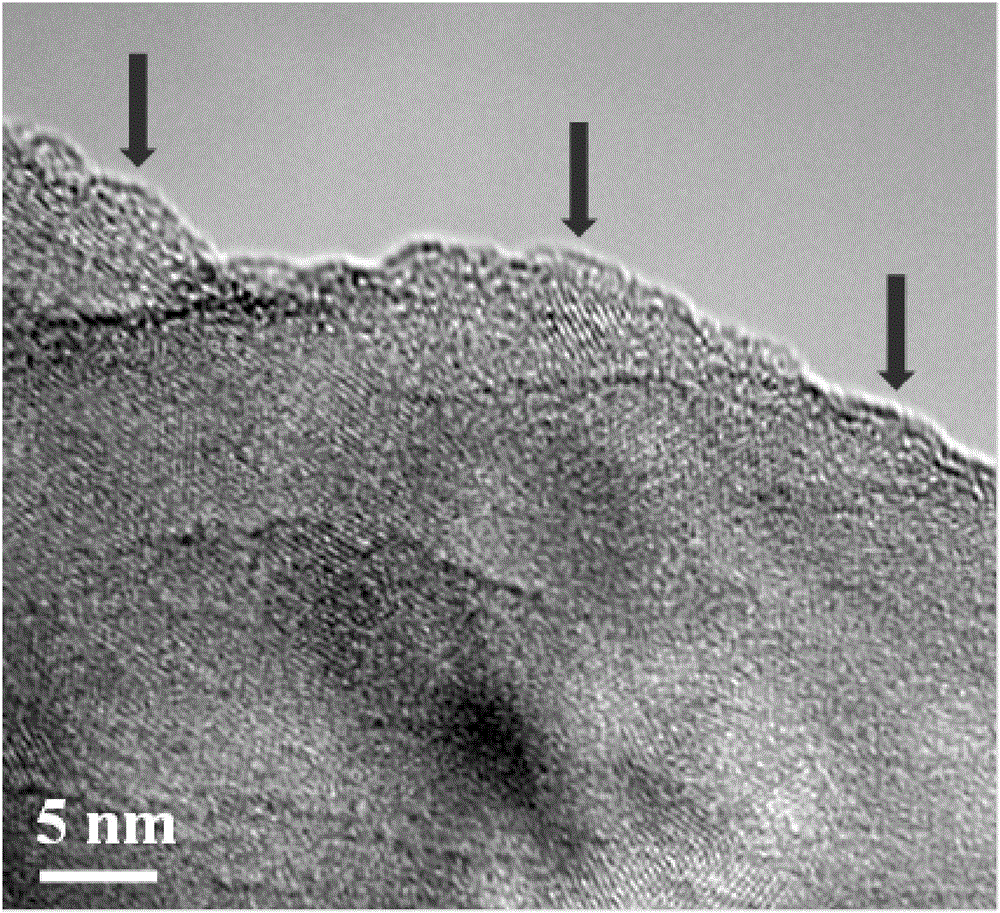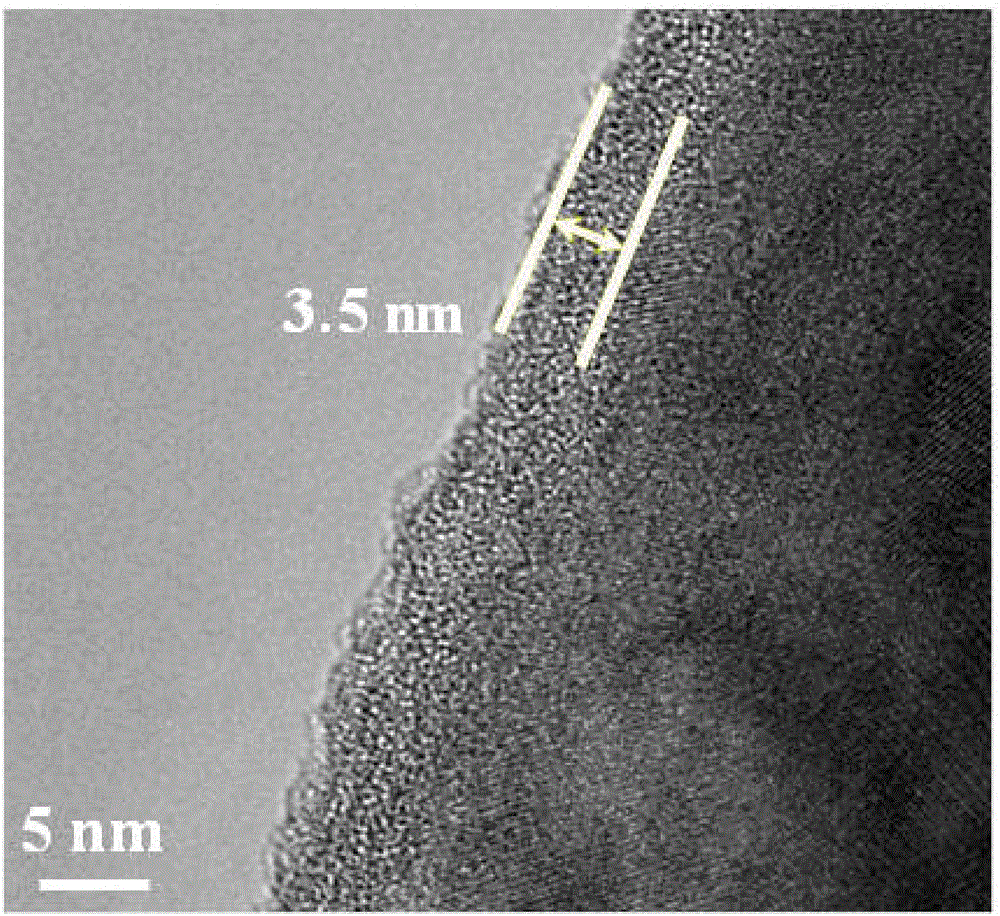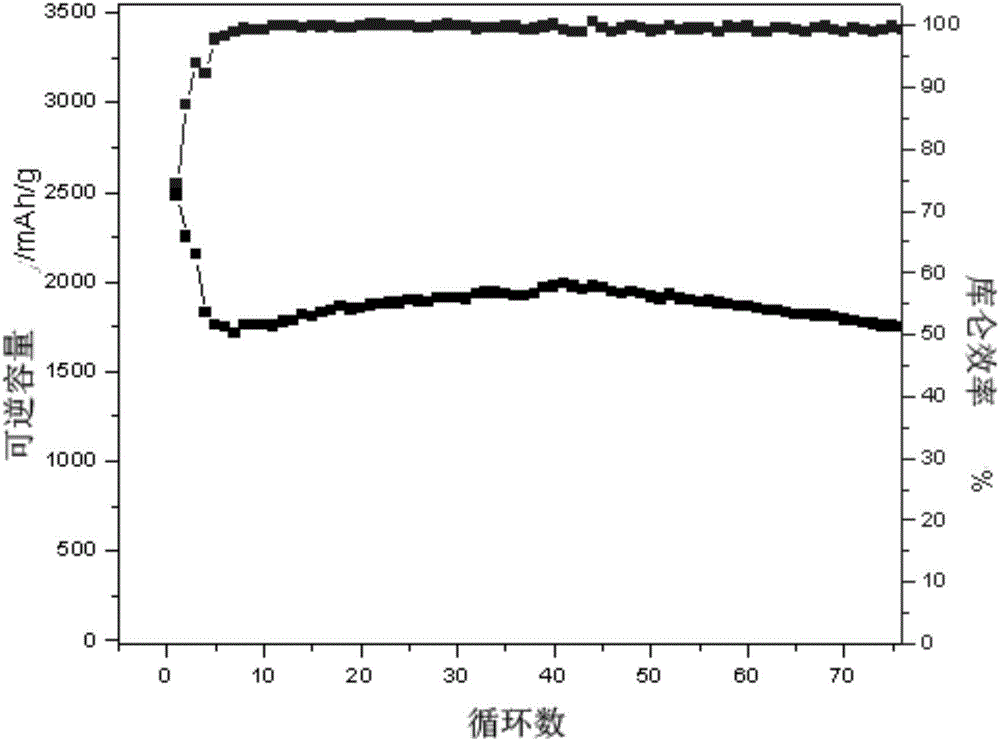Surface modification method for silicon negative electrode material of lithium ion battery, silicon negative electrode material and application
A lithium-ion battery, surface modification technology, applied in battery electrodes, secondary batteries, circuits, etc., can solve problems such as loss of conductive connection of current collectors, destruction of conductive networks, and lithium consumption.
- Summary
- Abstract
- Description
- Claims
- Application Information
AI Technical Summary
Problems solved by technology
Method used
Image
Examples
Embodiment 1
[0038] (1) Prepare 100g of hydrofluoric acid solution with a mass fraction of 10%, then weigh 20g of commercial silicon powder with a particle size of about 100nm, add it to the hydrofluoric acid solution, and react for 30min under magnetic stirring , completely remove the oxide layer on the silicon surface.
[0039] (2) Then transfer the reacted silicon solution to a centrifuge tube for centrifugation, discard the supernatant, and wash with distilled water 3 times. Then transfer to a vacuum oven and dry at 60 °C for 4 h.
[0040] (3) Transfer the dried silicon powder to a tube furnace, heat it at 500°C for 60 minutes in an air atmosphere, and then take out the porcelain boat to cool down, so that a continuous, dense and uniform silicon oxide layer can be rebuilt on the surface of the silicon powder.
[0041] (4) Weigh 2g of the modified silicon powder and mix it with sodium alginate binder and conductive carbon ink at a mass ratio of 6:2:2, then stir with a high-speed sheare...
Embodiment 2
[0043] (1) Prepare 100g of hydrofluoric acid solution with a mass fraction of 10%, then weigh 20g of commercial silicon powder with a particle size of about 100nm, add it to the hydrofluoric acid solution, and react for 30min under magnetic stirring , completely remove the oxide layer on the silicon surface.
[0044](2) Then transfer the reacted silicon solution to a centrifuge tube for centrifugation, discard the supernatant, and wash with distilled water 3 times. Then transfer to a vacuum oven and dry at 60 °C for 4 h.
[0045] (3) Transfer the dried silicon powder to a tube furnace, heat it at 700°C for 30 minutes in an air atmosphere, and then take out the porcelain boat to cool down, so that a continuous, dense and uniform silicon oxide layer can be rebuilt on the surface of the silicon powder.
[0046] (4) Weigh 2g of silicon powder and mix it with sodium alginate binder and conductive carbon ink at a mass ratio of 6:2:2, then stir with a high-speed shearer at a speed o...
Embodiment 3
[0048] (1) Prepare 100g of a solution with a concentration of 1mol / L, then weigh 20g of commercial silicon powder with a particle size of about 100nm, add it to the hydrofluoric acid solution, and react for 30min under magnetic stirring to completely remove silicon oxide layer on the surface.
[0049] (2) Then transfer the reacted silicon solution to a centrifuge tube for centrifugation, discard the supernatant, and wash with distilled water 3 times. Then transfer to a vacuum oven and dry at 60 °C for 4 h.
[0050] (3) Transfer the dried silicon powder to a tube furnace, heat it at 500°C for 1200 minutes in an air atmosphere, and then take out the porcelain boat to cool down, so that a continuous, dense and uniform silicon oxide layer can be rebuilt on the surface of the silicon powder.
[0051] (4) Weigh 2g of silicon powder and mix it with sodium alginate binder and conductive carbon ink at a mass ratio of 6:2:2, then stir with a high-speed shearer at a speed of 10,000rpm / m...
PUM
| Property | Measurement | Unit |
|---|---|---|
| Particle size | aaaaa | aaaaa |
| Particle size | aaaaa | aaaaa |
Abstract
Description
Claims
Application Information
 Login to View More
Login to View More - R&D
- Intellectual Property
- Life Sciences
- Materials
- Tech Scout
- Unparalleled Data Quality
- Higher Quality Content
- 60% Fewer Hallucinations
Browse by: Latest US Patents, China's latest patents, Technical Efficacy Thesaurus, Application Domain, Technology Topic, Popular Technical Reports.
© 2025 PatSnap. All rights reserved.Legal|Privacy policy|Modern Slavery Act Transparency Statement|Sitemap|About US| Contact US: help@patsnap.com



